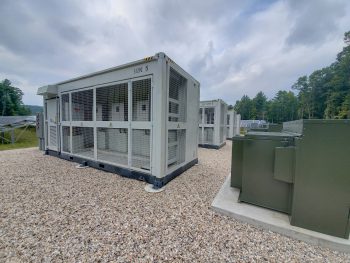MI PSC Order in Consumers Energy Rate Case Creates Muddled Future for Solar
Order falls short of judge’s recommendations
Lansing, MI — The Michigan Public Service Commission issued its Order in the Consumers Energy rate case on Thursday. While Consumers has agreed to double the cap on its Distributed Generation (DG) program from 1% to 2%, the order creates an uncertain future for solar energy in Michigan by falling short of the recommendations in Administrative Law Judge Sally Wallace’s October Proposal for Decision.
Doubling the cap on rooftop and other local solar will allow more Michiganders to access and benefit from environmentally sound and cost-saving distributed generation technologies such as rooftop solar panels. The legislative 1% cap is one of the most arbitrary and restrictive solar policies in the nation. New legislation is needed to prevent utilities from using voluntary actions like this as a bargaining chip in future cases before the MPSC.
While doubling the cap means more Michiganders will be able to participate in this program, they will be paid far less for the energy they generate. When solar panels or other DG technologies generate more power than they use, the excess electricity goes back to the grid to serve their neighbors and power other homes and businesses in the community.
“Consumers Energy’s distributed generation tariff shortchanges DG customers who provide significant value to the grid,” said Kevin Lucas, Director of Rate Design at the Solar Energy Industries Association (SEIA). “We are disappointed to see the Michigan Public Service Commission approve a rate that devalues solar and is not justified by any analysis. Through our analysis, we found that the value of exported energy from solar customers far outweighs the costs to serve these customers, showing that once again Consumers ignored basic facts to make their decision.”
Currently, people who participate in Consumers DG program are paid the full retail rate for any excess power they send to the grid. Under the Order approved on Thursday, Consumers will pay them a far lower rate — specifically, the power supply rate less transmission, a price that is far less than what Judge Wallace recommended.
“In slashing outflow rates by about half, this ruling will be devastating for residential customers,” said Rob Rafson, Chart House Energy. “If this doesn’t seem fair, that’s because it isn’t. It makes solar investment less attractive, which will cost a lot of Michigan jobs for solar developers.”
While the Commission approved Consumers Energy’s proposed DG compensation rate, it ordered a comprehensive third-party-led study on the impact of Distributed Energy Resources (DER). The DER study would examine the costs and benefits of all DERs — including rooftop solar, but also other innovative technologies such as battery storage, electric vehicles and demand response — and would vet different approaches to setting rates for DER customers.
“The study on Distributed Energy Resources (DERs) is a direct result of our advocacy for a rigorous, quantitative assessment of the value of solar to set a fair, statewide rate for compensating solar producers,” said Will Kenworthy, Regulatory Director, Midwest for Vote Solar. “The study — if conducted properly — would result in an equitable rate design that supports a range of local solar and storage resources that would yield savings for all customers.”
Commission staff will organize a kick-off meeting for this DER study in the first quarter of 2021, seeking input from stakeholders. Clean energy intervenors will continue to be involved to ensure the study lives up to its potential.
Also notable is the Commission’s approval of Consumers’ proposed PowerMIFleet program, that included improvements the intervenors recommended. The program will include a concierge service to assist fleet managers in planning to go electric, and rebates to help cover the costs of new charging equipment. The Commission also ordered the company to propose a pilot program for its own vehicle fleet to transition to electric in its next rate case.
“Consumers’ PowerMIFleet program fills a key need in supporting municipal and private fleets who want to transition to electric, including trucks, buses, and delivery vehicles,” said Charles Griffith, Climate and Energy Program Director at the Ecology Center. “By supporting the development of EV charging infrastructure for the emerging electric truck market, Consumers Energy customers will be able to look forward to cleaner air and more low-carbon transportation options in their communities.”
Finally, the Commission’s Order included a series of significant directives related to Consumers Energy’s distribution grid planning and spending. This not only provides clarity on what the Commission expects from Consumers in terms of grid planning, it strengthens what is expected.
“The Order goes a long way towards ensuring that Consumers’ next distribution plan filing is robust, and that the Company’s distribution spending aligns with customers’ needs and expectations,” said Nikhil Vijaykar, Staff Attorney at the Environmental Law & Policy Center.
The group of clean energy intervenors, called the Joint Clean Energy Organizations (JCEO) consists of: the Ecology Center, the Environmental Law & Policy Center, the Great Lakes Renewable Energy Association, the Solar Energy Industries Association, and Vote Solar.
###
About SEIA®:
The Solar Energy Industries Association® (SEIA) is leading the transformation to a clean energy economy, creating the framework for solar to achieve 20% of U.S. electricity generation by 2030. SEIA works with its 1,000 member companies and other strategic partners to fight for policies that create jobs in every community and shape fair market rules that promote competition and the growth of reliable, low-cost solar power. Founded in 1974, SEIA is a national trade association building a comprehensive vision for the Solar+ Decade through research, education and advocacy. Visit SEIA online at www.seia.org.
Media Contact:
Morgan Lyons, SEIA’s Senior Communications Manager, mlyons@seia.org (202) 556-2872



